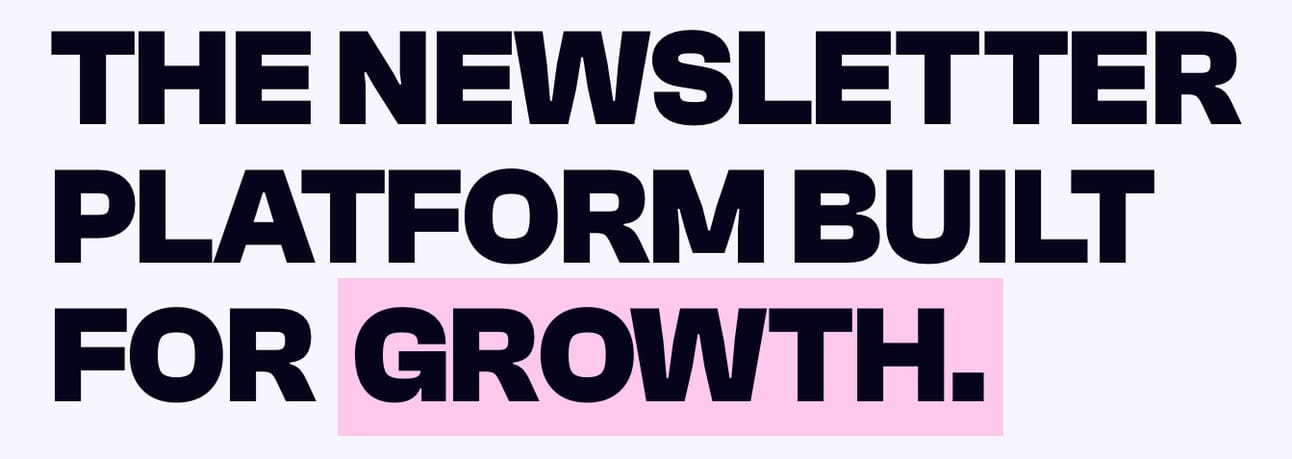Hey, Grow Newsie reader!
Here's something that should make every newsletter creator pause: newsletters focusing on specific niches achieve 16% higher open rates and 21% higher click-through rates compared to broad, general newsletters.
That's not a marginal difference—that's the gap between mediocrity and market leadership.
In 2024 alone, newsletter platforms like beehiiv saw email volume jump from 4.5 billion to 15.6 billion messages. But here's the kicker: the newsletters winning this attention war aren't trying to be everything to everyone. They're going narrow and deep.
Sponsored by: ATTIO
Introducing the first AI-native CRM
Connect your email, and you’ll instantly get a CRM with enriched customer insights and a platform that grows with your business.
With AI at the core, Attio lets you:
Prospect and route leads with research agents
Get real-time insights during customer calls
Build powerful automations for your complex workflows
Join industry leaders like Granola, Taskrabbit, Flatfile and more.
🎯 Why Niche Wins: The Fundamental Shift
1. The Personalization Imperative
A 2022 Twilio report revealed that 62% of consumers will stop caring about a brand if it doesn't offer personalized content. Your readers don't want another "marketing tips" newsletter—they want "email marketing strategies for B2B SaaS companies" or "content marketing for e-commerce brands."
The difference? Specificity creates relevance. Relevance creates engagement. Engagement creates revenue.
2. The Curation Economy
We're drowning in content. Over 376 billion emails are sent daily worldwide in 2025. In this noise, your readers aren't looking for more information—they're looking for the right information.
Niche newsletters act as expert curators. When you focus on AI tools for healthcare professionals instead of "general AI news," you become the trusted filter in a sea of noise.
3. Higher Monetization Potential
Here's where it gets interesting for your wallet:
B2B niche newsletters: $100-$500 CPM for sponsorships
Broad B2C newsletters: $25-$50 CPM
Why the 10x difference? Niche audiences have specific needs, and brands will pay premium prices to reach decision-makers with purchasing power.
Industry Dive, a B2B newsletter company with highly specialized publications, sold for $525 million. They weren't covering "business news"—they had 30+ niche publications covering everything from retail to cybersecurity.
Based on recent engagement data, here are the niches crushing it:
High-Engagement Champions:
Fitness & Wellness: 42.55% open rate
Mental Health: 41.98% open rate
General Health: 40.58% open rate
Writing & Content Creation: 39.63% open rate
Sports: 39.19% open rate
Lucrative B2B Niches:
Marketing operations and growth
SaaS product management
E-commerce strategy
AI for specific industries (AI for lawyers, AI for marketers)
Remote work and digital nomad lifestyle
Emerging Opportunities:
Longevity and biohacking
Female entrepreneurship
Sustainability and eco-living
Local community news (scalable to $5M+ exits)
Hobby-specific communities (watch collecting, reef keeping, etc.)
🚀 How to Position Your Niche Newsletter for Growth
Strategy 1: Go 3 Levels Deep
Don't stop at "tech newsletter." Go deeper:
Tech → SaaS → Email marketing for SaaS → Email deliverability for enterprise SaaS
The deeper you go, the less competition and the more authority you build.
Strategy 2: Define Your Job-to-Be-Done
Answer this in one sentence: "I help [specific audience] achieve [specific outcome] by [your unique approach]."
Example: "I help newsletter creators monetize their content through data-driven sponsorship strategies and audience growth tactics."
Strategy 3: Build for Buying Power
Choose niches where your audience actively purchases solutions:
✅ Marketers (big budgets, constant tool buying)
✅ Founders (investing in growth and productivity)
✅ Investors (seeking information advantages)
❌ Customer support reps (limited purchasing authority)
This is why there are dozens of marketing newsletters but almost no customer support newsletters.
Strategy 4: Validate Before You Scale
Before going all-in:
Check existing newsletters in your niche on platforms like Paved or SparkLoop
Research on Who Sponsors Stuff to see advertiser demand
Survey 10 potential readers about what content gaps they see
Launch with 5 editions to test engagement before committing
🔧 Implementation Checklist
This Week:
Audit your current newsletter positioning
Identify 3 potential niches at the intersection of your expertise and market demand
Research 5 successful newsletters in your potential niches
List the specific "job-to-be-done" your newsletter would solve
Next Week:
Survey 10-20 potential subscribers about their content needs
Map out 10 edition topics to validate content sustainability
Check advertiser demand using Who Sponsors Stuff or similar tools
Draft your niche positioning statement
Month 1:
Launch or pivot to your focused niche
Create a content calendar with 12 weeks of topics
Set up tracking for open rates, CTR, and subscriber feedback
Join niche communities where your ideal readers congregate
📚 Key Takeaways
Niche newsletters deliver 16% higher open rates and 21% higher CTR than broad alternatives
Personalization is non-negotiable: 62% of consumers abandon brands that don't personalize
Monetization scales with specificity: B2B niche newsletters command 5-10x higher CPMs
Top niches combine expertise, audience demand, and buying power
Go narrow, go deep: The riches are in the niches, but avoid getting too micro
💬 Your Move
The shift to niche newsletters isn't a trend—it's the new standard. The newsletters that thrive will be those that serve specific audiences exceptionally well, not those trying to serve everyone adequately.
Question for reflection: If you could only serve one specific type of reader for the next 5 years, who would it be and what unique outcome would you help them achieve?
Keep growing!
With love,
Nikhil
How was today's edition?
If you’ve ever thought about starting your own newsletter (or switching to a better platform), I’ve partnered with the beehiiv team to set you up with:
✅ 20% off your first 3 months
✅ A free 30-day trial, no credit card needed


